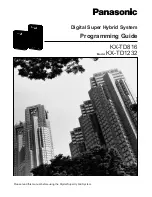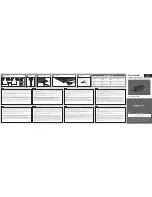
90
SIP registration can be very simple with some servers, and others can require more advanced settings. There are
several advanced settings available for use with SIP and they are described in the section
Advanced Settings on
page 126
.
MakIng SIP rEgIStErEd CallS
When registered, calls made using a EBU 3326/SIP profile behave differently than normal. The address field,
regardless of whether it is a SIP URI or an IP address, is forwarded to the server. No connection attempt is made
until the
server responds.
If the server accepts the address, the call will be attempted. If not, an error message will appear in the status line.
Reasons for call rejection by a server are many. Some examples:
1
The server does not support direct connection to IP addresses (if the address is in this format)
2
The server does not recognize the address
3
The server does not forward calls beyond it’s own domain
4
The server does not support the chosen codec
5
The called device does not support the chosen codec
6
The address is a POTS telephone number, and POTS interworking is not supported
7
The address is a POTS telephone number, and no credit is available (most services charge for
this)
The basic entries provided will allow support for the vast majority of EBU 3326/SIP based applications. However,
there are inevitably situations where the defaults don’t work. We’ve provided some advanced options that
can help. As always, these options are located in the
Systems Settings
and can be made visible by selecting the
Advanced
box.
IP Port
- Universally, SIP connections are supposed to use UDP port
5060
to negotiate calls between devices (and
between servers and devices). Note this is only the negotiation channel - actual audio data is passed on the RTP
ports. Changing this port number will change which incoming ports are used to initiate connections and to which
ports connection requests are sent. Obviously, the change must be made on both devices, and this change will
essentially make your codec incompatible with industry-standard VoIP devices.
RTP Port
- This is one of two port numbers used for audio data transfer (the port number directly above this is
used as well). Because this port number is negotiated at the beginning of a call (over the IP port), this port may
be changed without breaking compatibility. Note that many SIP standard devices use port
5004
for this function.
Due to the negotiation, it is not important that these numbers match on each end. Changing this port to
5004
can
actually have an adverse effect, since
5004
is the default port for other services on Comrex codecs.
Public IP Override
- See the next section,
SIP Troubleshooting
for more information
Содержание ACCESS 2USB
Страница 1: ...Product Manual ...
















































